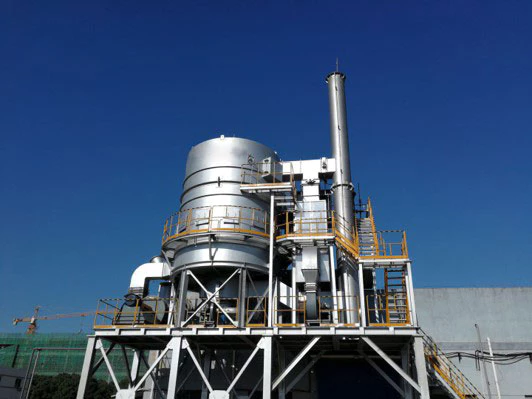What are the safety considerations for RTO in the printing industry?
pengenalan
Regenerative Thermal Oxidizers (RTO) are widely used in the printing industry to eliminate volatile organic compounds (VOCs) emitted during the printing process. While RTOs are effective in reducing air pollution, they also pose certain safety risks to workers and equipment in the printing facility. In this blog post, we will explore the safety considerations that need to be taken into account when using RTOs in the printing industry.
Fire and Explosion Hazards
RTOs operate at high temperatures, which can lead to the accumulation of flammable gases and vapors, creating a fire or explosion hazard. To mitigate these risks, several precautions should be taken:
- Install explosion relief devices and fire suppression systems to contain fires and explosions.
- Ensure that the RTO is separated from other equipment to prevent the spread of fire and protect the equipment from heat damage.
- Regularly inspect and maintain the RTO to prevent leaks and other malfunctions that could lead to a fire or explosion.
Worker Safety
Workers who operate and maintain RTOs are exposed to several safety risks, including burns, electrical shocks, and inhalation of toxic gases. The following safety measures should be implemented to protect workers:
- Provide workers with adequate training on RTO operation, maintenance, and safety procedures.
- Equip workers with personal protective equipment (PPE), such as heat-resistant gloves and safety glasses, to protect them from burns and other hazards.
- Regularly inspect and maintain the RTO to prevent leaks and other malfunctions that could expose workers to toxic gases.
- Ensure that workers are aware of emergency procedures and evacuation routes in case of a fire or explosion.
Environmental Considerations
While RTOs are designed to eliminate VOCs and reduce air pollution, they can also have a negative impact on the environment if not properly maintained. The following precautions should be taken to minimize environmental risks:
- Regularly inspect and maintain the RTO to prevent leaks and other malfunctions that could release VOCs into the environment.
- Monitor the RTO’s emissions to ensure that they comply with local and national air quality regulations.
- Use environmentally friendly inks, adhesives, and other materials in the printing process to reduce the amount of VOCs emitted.
Equipment Maintenance
Regular maintenance of RTOs is essential to ensure their safe and efficient operation. The following maintenance procedures should be performed:
- Regularly inspect and clean the RTO’s heat exchangers, valves, and other components to prevent leaks and other malfunctions.
- Replace damaged or worn out components to prevent equipment failure and worker injuries.
- Perform routine maintenance tasks, such as lubrication and tightening of bolts and screws, to ensure the RTO operates efficiently.
Kesimpulan
In conclusion, while RTOs are effective in reducing air pollution in the printing industry, they also pose certain safety risks to workers and equipment. By implementing appropriate safety measures, such as installing fire suppression systems and providing workers with PPE, and performing regular maintenance, printing facilities can ensure the safe and efficient operation of RTOs.
What are the safety considerations for RTO in the printing industry?
Our company is a high-tech enterprise specializing in the comprehensive treatment of volatile organic compound (VOC) exhaust gas and carbon reduction and energy-saving technology. Our core technologies include thermal, combustion, sealing, and automatic control, as well as the ability to simulate temperature and air flow fields and test the properties of ceramic heat storage materials, molecular sieve adsorption materials, and high-temperature incineration and oxidation of VOCs.
With a RTO technology research and development center and waste gas carbon reduction engineering technology center in Xi’an and a 30,000 square meter production base in Yangling, we are a leading manufacturer of RTO equipment and molecular sieve rotary equipment worldwide. Moreover, our core technical team comes from the Sixth Academy of Aerospace Liquid Rocket Engine Research Institute. We have more than 360 employees, including over 60 R&D technology backbone personnel, three research fellows, six senior engineers, and 47 thermodynamics doctors.
Our core products include rotary valve heat storage oxidation incinerator (RTO) and molecular sieve adsorption concentration rotary equipment. Combined with our own environmental protection and thermal energy system engineering technology expertise, we can provide customers with comprehensive solutions for industrial waste gas treatment and carbon reduction with various operating conditions.
Our company has obtained various certifications, qualifications, patents, and honors, such as intellectual property management system certification, quality management system certification, environmental management system certification, building industry enterprise qualification, high-tech enterprise, rotary valve heat storage oxidation furnace rotary valve patent, rotary heat storage incineration device patent, and discoidal molecular sieve rotary patent.

To choose the right RTO equipment, you need to determine the characteristics of the waste gas, understand the local regulations and emission standards, evaluate energy efficiency, consider operation and maintenance, budget and cost analysis, choose the appropriate RTO type, consider environmental and safety factors, and conduct performance testing and verification.

Our service process includes preliminary consultation, on-site inspection, demand analysis, scheme design, simulation, and approval, customized production, quality control, factory testing, on-site installation, commissioning and operation, training services, regular maintenance, technical support, and spare parts supply. We can provide customers with one-stop solutions and tailor-made RTO solutions with a professional team.
Author: Miya.
